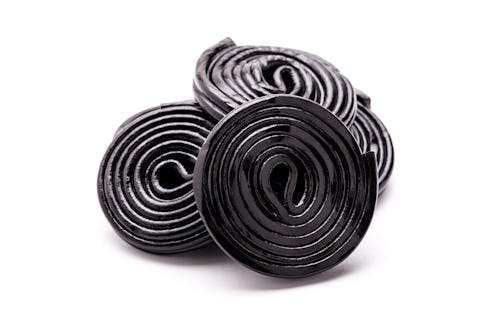Life
The FDA Sent Out A Warning That You Can Literally Overdose On Black Licorice
Not that too many people will be upset by this news, but the FDA says you can actually overdose on black licorice. If you heard something, that was just the collective gasp of, like, fourteen people emotionally affected by this information. I guess if nothing else, perhaps you will feel vindicated in your hatred of black licorice.
As if the candy weren’t divisive enough already, the U.S. Food and Drug Administration posted a reminder on Facebook yesterday about the black licorice warning they issued last year. No, the warning was not “it tastes like sh*t” as the meme the FDA shared stated. (And yes, the FDA shares memes on Facebook. Is this a trick? Is it a treat? Who can say?) Right before Halloween in 2017, just in time for trick-or-treaters and their parents to panic, the FDA issued a warning about eating large quantities of black licorice.
“If you’re 40 or older, eating 2 ounces of black licorice a day for at least two weeks could land you in the hospital with an irregular heart rhythm or arrhythmia,” the FDA website states. Two ounces, as the number “two” suggests, in not a large amount in and of itself. In fact, that’s about the weight of two servings of Black Licorice Red Vines or six pieces of licorice.
However, it’s the repeated, regular consumption of black licorice the FDA is warning against, specifically people older than 40. So, unless you’re chowing down on black licorice for breakfast, lunch, and dinner, you’re probably good.
According to the FDA, black licorice contains a compound called glycyrrhizin. It’s the sweetening compound found in licorice root. Per the FDA’s warning, overconsumption of glycyrrhizin can cause potassium levels within our bodies to drop. “When that happens,” the warning states, “some people experience abnormal heart rhythms, as well as high blood pressure, edema (swelling), lethargy, and congestive heart failure.” However, your body’s potassium levels will return to a normal level once you stop eating black licorice, according to the FDA’s Linda Katz, M.D.
Even the few among us who do love themselves some black licorice likely have little to worry about. While there are plenty of black licorice products, many don’t use actual licorice at all. Rather, they use anise, a star-shaped spice that has a smell and taste almost identical to licorice, as the FDA points out.
Maybe you keep containers of black licorice out of your candy cabinet (adults have candy cabinets, rights?), you likely have licorice-flavoring in the form of Jägermeister. The liquor gets its distinct taste in part for both black licorice extract and anise.
This resurgence of this FDA warning didn’t come from thin air, as an effort to spook us all out of eating licorice. As TODAY reports, one man is suing Twizzlers after experience health problems he alleges came as a result of eating black licorice. Just how much black licorice was 73-year-old David Goldberg of New York City eating? According to the lawsuit, “at least one standard size bag [of black licorice candy] per week” over the course of multiple years. In other words, just SO MUCH BLACK LICORICE.
Goldberg claims Twizzlers’ licorice bags didn’t have sufficient warning regarding potential health risks, for example: “that consumption of the black licorice product can lead to heart conditions.” Goldberg also claims he had no history of heart conditions.
Hershey’s black licorice does contain licorice extract, which the company says is derived from a “natural flavor obtained from the root of the licorice plant.” However, as Hershey’s told TODAY in a statement, it is within FDA compliance: “We are not going to comment on the specific claims as this is pending litigation, but all of our products are safe to eat and formulated in full compliance with FDA regulations, including the agency’s regulation affirming the safety of licorice extract for use in food.”
I'm still going to stick with Kit Kats, you know, for health reasons.
